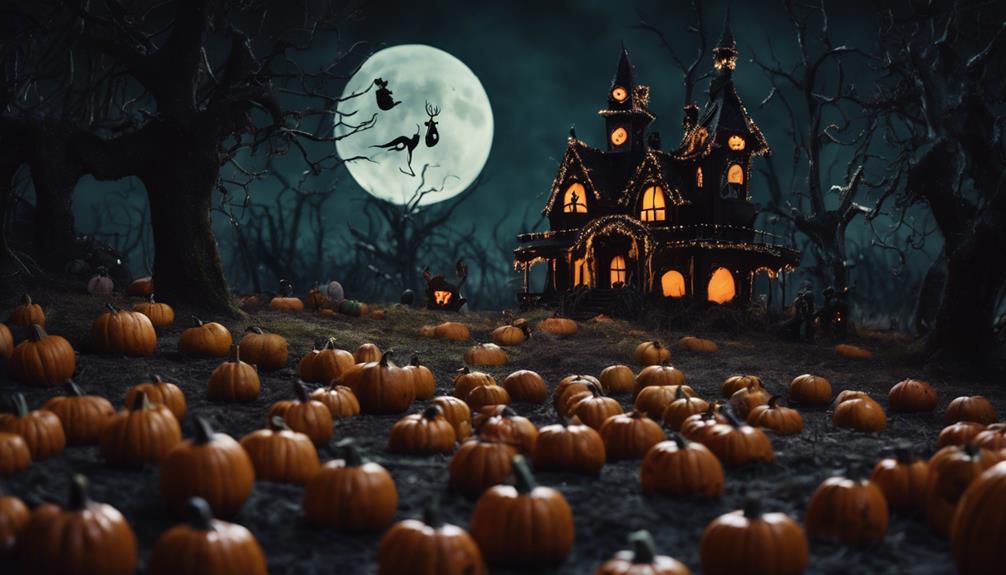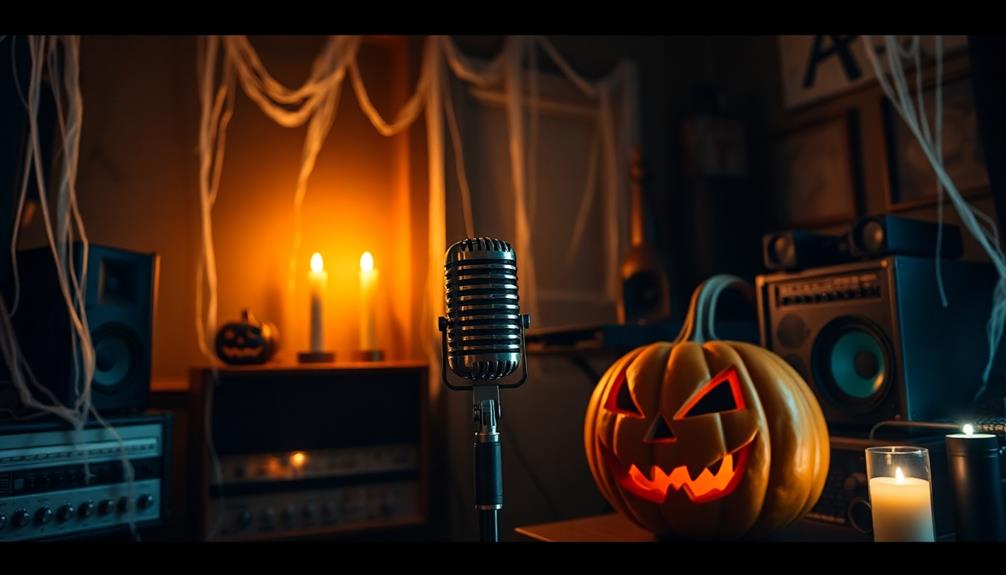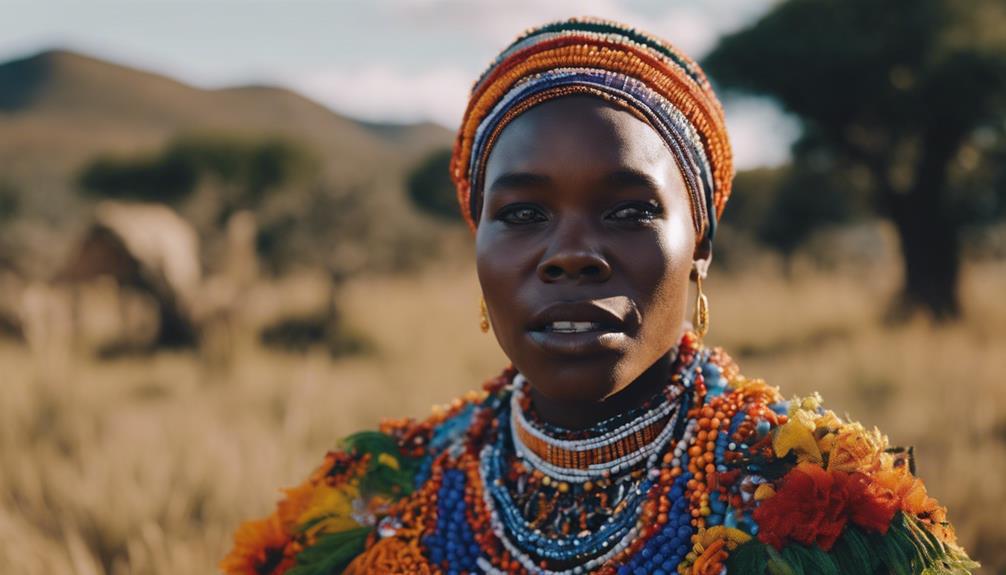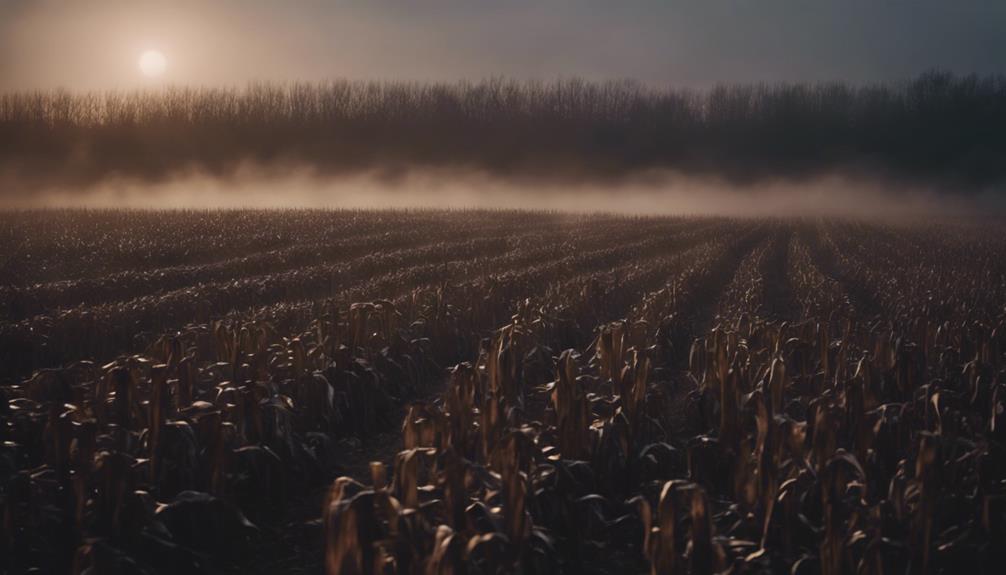Step into the magical debate surrounding 'The Nightmare Before Christmas' – is it a Halloween movie or something more? Explore its origins from Tim Burton's mind, his creative influence shaping the darkly whimsical world and iconic characters like Jack Skellington. Delve into the animation techniques that brought this enchanting tale to life and the debate surrounding its holiday categorization. Uncover themes of gratitude, family, and community while discovering the lasting legacy and cultural impact of this timeless classic. Discover the secrets behind this masterpiece and let the enchanting journey begin.
Key Takeaways
- Debate over film's categorization as both Halloween and Christmas movie.
- Blurred holiday themes contributing to the film's appeal.
- Introduction of Halloween and Christmas elements blurring genre lines.
- Unique blend of spooky and festive elements in the storyline.
- Tim Burton's dark whimsical style defining the movie's charm.
Origins of 'The Nightmare Before Christmas'
The origins of 'The Nightmare Before Christmas' can be traced back to a three-page poem written by Tim Burton in 1982. After the success of his short film 'Vincent,' Burton began developing the idea further. However, due to his commitments to other projects, Henry Selick ended up directing the full-length Christmas movie. Caroline Thompson was brought on board to write the screenplay based on Burton's original poem.
Interestingly, when Burton initially pitched his concept to Disney, it was deemed too strange for their liking. This led to Burton parting ways with the studio in 1984. Despite this setback, the project continued to evolve, eventually becoming the beloved 'The Nightmare Before Christmas' film we're familiar with today. It's fascinating to see how Burton's unique vision, though initially misunderstood, found its way to the screen through the collaboration with Henry Selick and the team at Disney.
Tim Burton's Influence on the Film
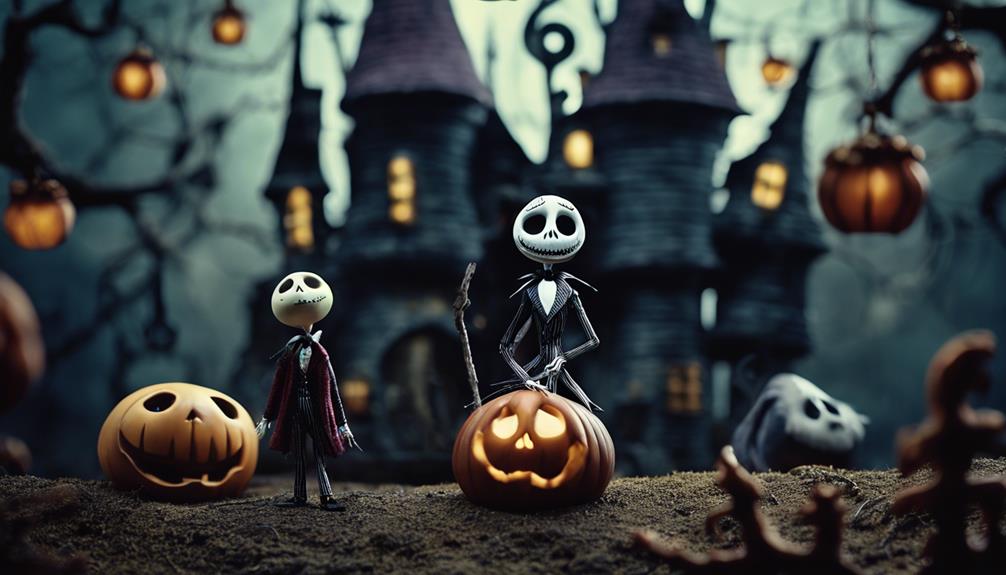
Tim Burton's creative vision deeply permeates every aspect of 'The Nightmare Before Christmas,' shaping its darkly whimsical world and characters. Despite not directing the film himself, Burton's initial concept and unique style were instrumental in defining the movie's eerie charm. Henry Selick, under Burton's guidance as producer, brought the imaginative world to life on screen. Disney Studios initially hesitated due to the unconventional nature of the project, reflecting Burton's tendency to push boundaries creatively. The film's success owes much to Burton's early involvement, setting the tone for the collaboration between Selick, Disney Studios, and other key contributors like Danny Elfman, who crafted the iconic musical score. This collaboration highlights Burton's ability to inspire and lead creative teams, even when not in the director's chair.
| Tim Burton | Henry Selick |
|---|---|
| Concept creator | Director |
| Producer | Brought vision to life |
| Creative influence | Collaborated closely |
| Innovative style | Executed Burton's vision |
| Disney Studios | Danny Elfman |
| Initial hesitation | Iconic musical score |
| Collaborated with Burton | Composed memorable music |
| Benefited from Burton's vision | Integral to film's success |
| Overcame skepticism | Added depth to the story |
The Debate: Halloween Vs. Christmas
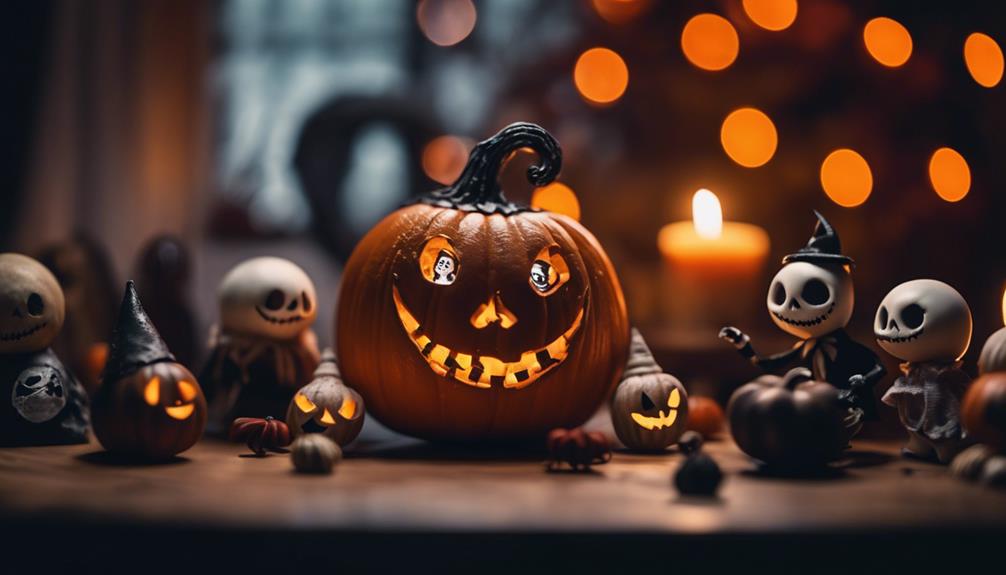
Entering the debate over 'The Nightmare Before Christmas' categorization as a Halloween or Christmas movie sparks lively discussions among fans and critics alike. The film's release date of October 13 and its blend of dual holiday themes contribute to the arguments for both Halloween and Christmas categorization.
Tim Burton's creation introduces Jack Skellington's encounter with Santa Claus, which adds weight to the Christmas movie argument. The narrative and spirit of the movie resonate with the essence of both Halloween and Christmas, making the debate complex and intriguing.
Some fans playfully propose that the unexpected resolution could be that 'The Nightmare Before Christmas' is, in fact, a Thanksgiving movie. The movie's ability to straddle the line between these two prominent holidays showcases the genius of Tim Burton's creation, leaving viewers to ponder the true essence of the film and its place within the holiday movie genre.
Iconic Characters in the Movie
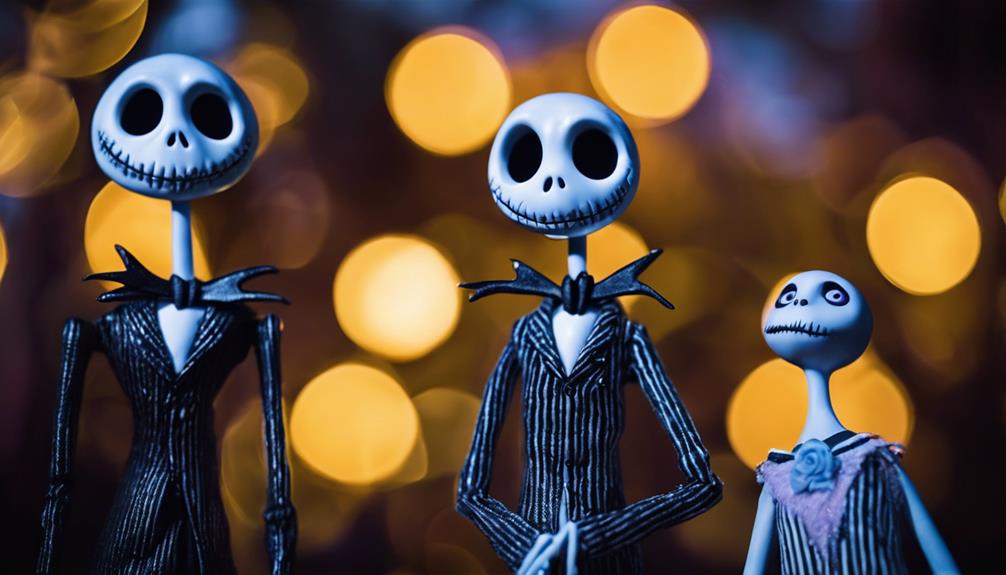
In 'The Nightmare Before Christmas', the iconic characters like Jack Skellington, Sally, Oogie Boogie, the Mayor, and Lock, Shock, and Barrel are known for their memorable designs and complex motivations.
Each character brings a unique element to the story, adding depth and intrigue to their interactions. As you explore these characters, you'll uncover a rich tapestry of personalities that contribute to the movie's enduring appeal.
Memorable Character Designs
With their detailed and unique designs, the iconic characters in 'The Nightmare Before Christmas' bring a distinct charm to the movie, enchanting audiences with their individuality and creativity. Each character's appearance adds depth to the story, making them unforgettable in the world of animation. Let's take a closer look at some of the most memorable character designs in the film:
| Character | Description |
|---|---|
| Jack Skellington | Features over 400 interchangeable heads for various expressions. |
| Sally | Intricate details like stitched patches and flowing red hair. |
| Oogie Boogie | Creepy yet unique as a burlap sack filled with bugs. |
| Mayor of Halloween Town | His rotating head with two faces reflects his emotions. |
| Lock, Shock, and Barrel | Mischievous trick-or-treaters with distinct personalities and costumes. |
These characters not only contribute to the visual appeal of the movie but also play vital roles in shaping the narrative and captivating the audience's imagination.
Character Motivations Explored
As we explore the motivations of the iconic characters in 'The Nightmare Before Christmas, their driving forces and desires come to light, adding depth to their already enthralling personas.
Jack Skellington's motivation stems from his yearning to find something new and thrilling beyond the confines of Halloween Town.
Sally, on the other hand, is driven by her love for Jack and her desire to protect him from any potential harm.
Oogie Boogie's motivations are centered around causing chaos and instilling fear among the inhabitants of Halloween Town, while Santa Claus embodies the spirit of spreading joy and happiness during Christmas, which starkly contrasts with Jack's initial intentions.
Each character's unique motivations contribute to the intricate web of relationships and conflicts that make 'The Nightmare Before Christmas' a captivating and timeless tale.
Behind-the-Scenes Animation Techniques
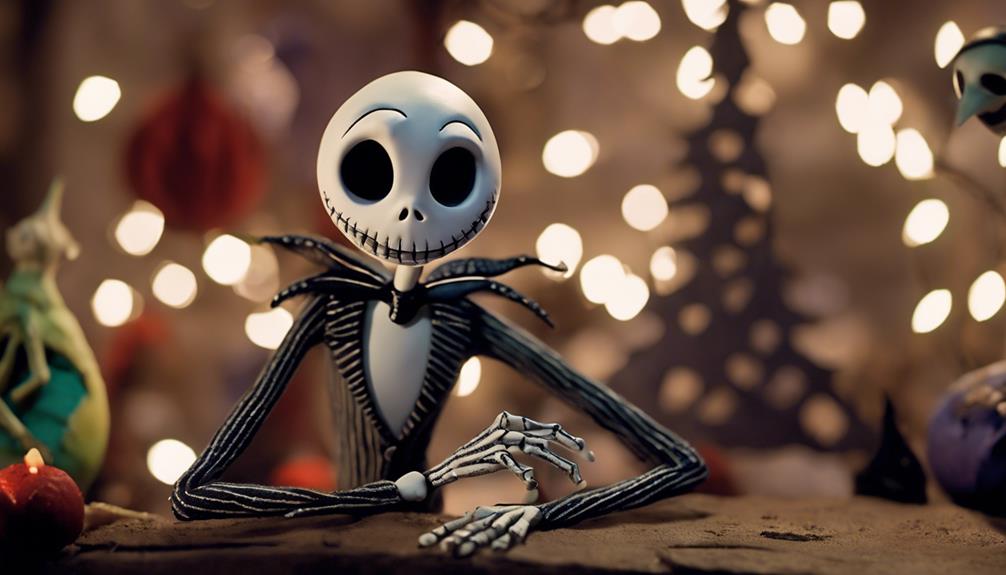
Exploring the intricate world of animation techniques behind 'The Nightmare Before Christmas' reveals a fascinating blend of craftsmanship and creativity.
The film's production design, inspired by artists like Edward Gorey and Wassily Kandinsky, crafted a unique visual aesthetic that sets it apart. Utilizing stop-motion animation, animators brought 227 puppets to life, each with over 400 different heads for Jack Skellington to convey various emotions.
To seamlessly manipulate the puppets, the set featured hidden spots, passageways, secret tunnels, and trapdoors. Additionally, digital effects from Walt Disney Feature Animation were integrated into the stop-motion animation to enhance specific scenes.
Sally's realistic mouth movements were achieved using the replacement method during filming, adding depth to her character. These behind-the-scenes techniques showcase the dedication and innovation that went into creating the beloved Halloween classic, 'The Nightmare Before Christmas'.
Musical Elements in the Film
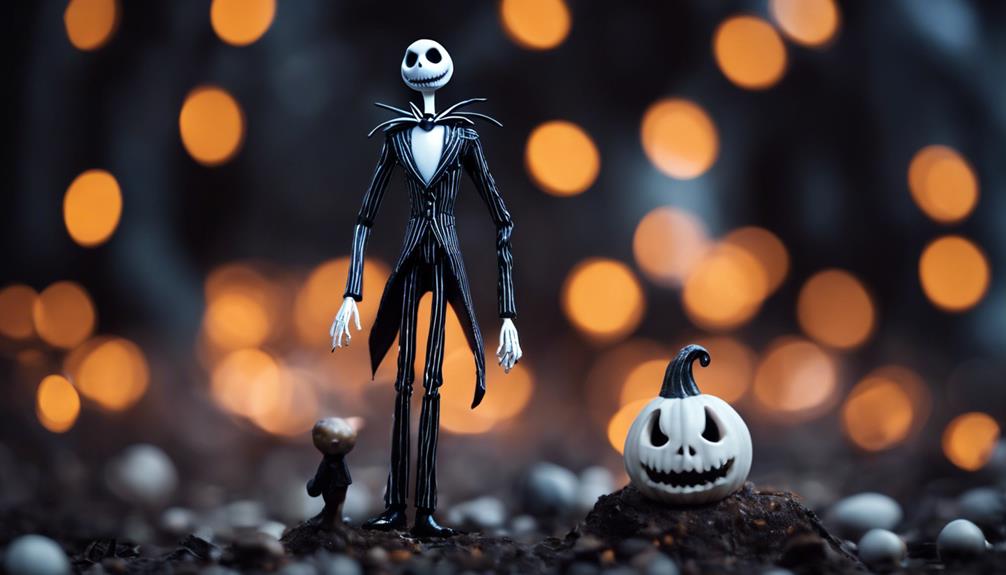
Danny Elfman's composition for 'The Nightmare Before Christmas' is a defining feature of the film, blending spooky and festive tunes seamlessly.
The songs, like 'What's This?,' play an essential role in enhancing the movie's unique atmosphere and charm.
Through the songwriting process and vocal performances, the musical elements in the film contribute greatly to its lasting popularity and cultural impact.
Songwriting Process
During the collaborative songwriting process for 'The Nightmare Before Christmas,' the iconic score was composed by Danny Elfman, with contributions from Tim Burton and Caroline Thompson. Danny Elfman, known for his unique and haunting musical style, played a pivotal role in crafting the film's memorable songs. Working closely with director Tim Burton and writer Caroline Thompson, Elfman's compositions helped bring the characters and story of Halloween Town to life.
Songs like 'What's This?' and 'Kidnap the Sandy Claws' are prime examples of how the music in the film blends spooky and festive tones, perfectly capturing the essence of the movie. Elfman's ability to unify themes through his music added depth and emotion to the characters, making 'The Nightmare Before Christmas' a timeless classic.
The collaborative effort between Elfman, Burton, and Thompson in the songwriting process was instrumental in creating the movie's lasting popularity and cultural impact.
Vocal Performances
The vocal performances in 'The Nightmare Before Christmas' added a layer of emotional depth to the characters, bringing them vividly to life on screen. Danny Elfman, known for his collaboration with Tim Burton, not only provided Jack Skellington's singing voice but also voiced Barrel and The Clown. Catherine O'Hara brought a hauntingly beautiful quality to Sally's character, enriching the film with her talent.
The combination of spoken dialogue by Chris Sarandon as Jack and Elfman's singing created a seamless portrayal of the Pumpkin King. The voice actors, including William Hickey, Glenn Shadix, and Ken Page, contributed significantly to the iconic nature of the characters. Their performances enhanced the overall storytelling, making the inhabitants of Halloween Town unforgettable.
Through their vocal expressions, the characters' personalities and emotions were magnified, captivating audiences and immersing them in the magical world crafted by Burton and Elfman.
Themes of Gratitude and Family
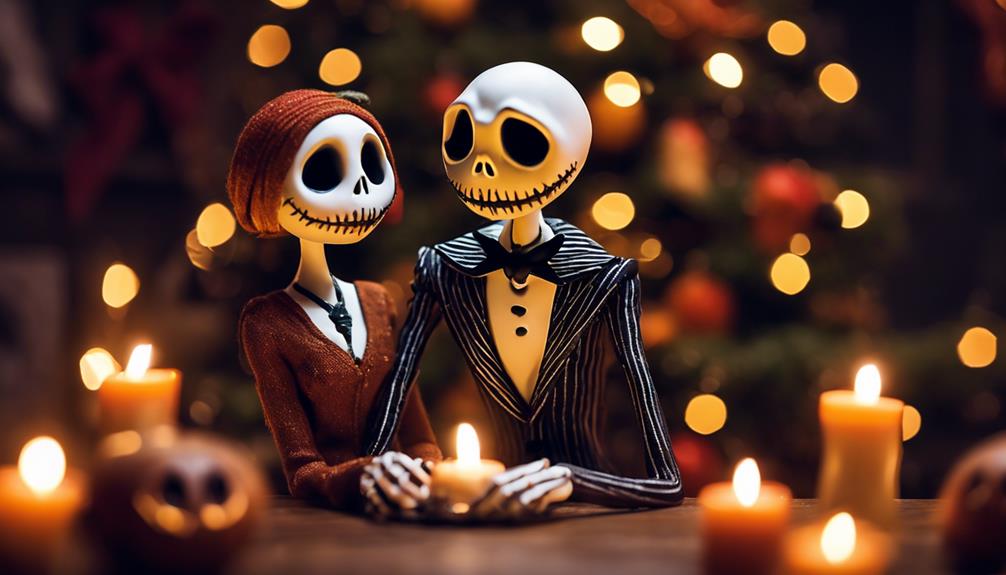
Emphasizing the essence of appreciation and familial bonds, 'The Nightmare Before Christmas' explores themes centered around gratitude and family dynamics. In this Halloween tale, Jack Skellington's journey unfolds to reveal the importance of gratitude, family, community, and love.
- Gratitude: The storyline highlights the significance of being thankful for what one has and acknowledging the efforts of others.
- Family: Lessons on the complexities of family relationships are depicted, showing the challenges and joys that come with familial bonds.
- Community: The movie emphasizes the value of a supportive community, where individuals come together to celebrate uniqueness and differences.
- Love: The significance of recognizing and embracing love, whether it be romantic, platonic, or familial, is a central theme throughout the film.
Through these themes, 'The Nightmare Before Christmas' conveys a deeper message about the power of gratitude and the importance of cherishing family and community ties.
Visual Design and Set Production
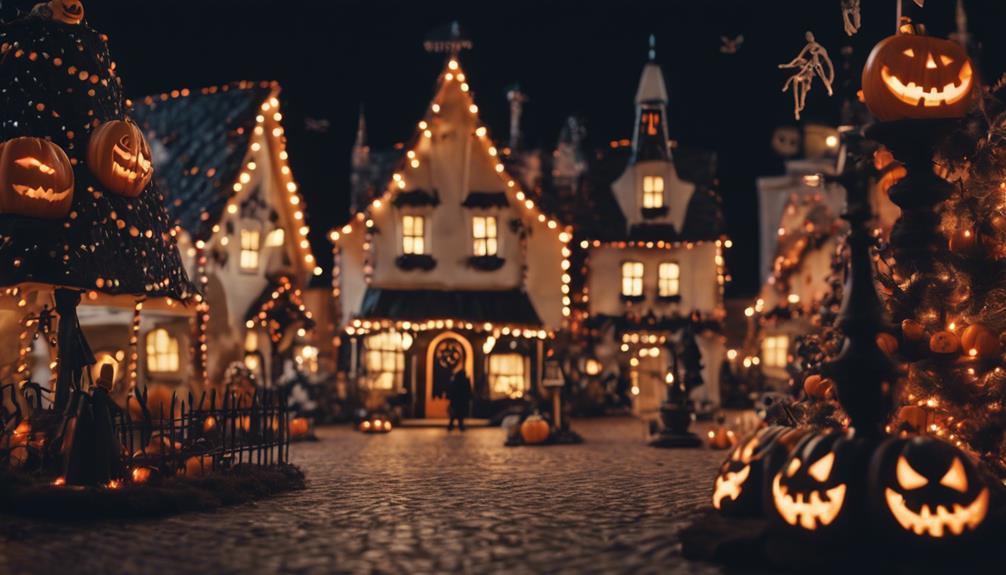
The visual design and set production in 'The Nightmare Before Christmas' are a tribute to Tim Burton's unique and eerie vision.
From the eerie yet enchanting Halloween Town inspired by German Expressionism to the whimsical Christmas Town reminiscent of Dr. Seuss, every detail was meticulously crafted to bring the story to life.
The intricate puppets, elaborate sets, and hidden passageways for animators all contributed to creating a visually stunning and immersive world for the film.
Creepy yet Captivating
Drawing inspiration from artists like Edward Gorey and Wassily Kandinsky, the visual design of 'The Nightmare Before Christmas' strikes a balance between creepiness and captivation. The set production involved 227 puppets and over 400 different heads for Jack Skellington to express emotions. The film's production design ranges from German Expressionism in Halloween Town to a Dr. Seuss-esque aesthetic in Christmas Town. Digital effects from Walt Disney Feature Animation were integrated into the stop-motion animation for added visual impact. Sally's mouth movements were animated using the replacement method during filming to enhance character expressions.
- The intricate designs of Halloween Town pay homage to German Expressionism, creating a dark and eerie atmosphere.
- The whimsical and colorful Christmas Town reflects a Dr. Seuss-inspired world, contrasting the haunting feel of Halloween.
- The blend of different artistic styles adds depth and complexity to the visual storytelling of the film.
- The use of stop-motion animation brings a unique and tangible quality to the characters and sets, enhancing the overall enchanting yet eerie aesthetic.
Tim Burton's Vision
Incorporating Tim Burton's distinctive style, the visual design and set production of 'The Nightmare Before Christmas' create a hauntingly enchanting world. Drawing inspiration from artists like Edward Gorey and Wassily Kandinsky, the production design of the film showcases a wide range of influences. Halloween Town embodies German Expressionism, while Christmas Town takes on a whimsical Dr. Seuss-esque style. The stop-motion animation used in the film integrates over 227 puppets, with Jack Skellington alone boasting around 400 interchangeable heads for various expressions. Additionally, digital effects from Walt Disney Feature Animation enhance the overall visual experience. The blend of artistic styles contributes to the unique and visually captivating world of the movie, making it a visually compelling feast for audiences. Below is a table summarizing key aspects of Tim Burton's vision in 'The Nightmare Before Christmas':
| Aspect | Description |
|---|---|
| Inspiration | Edward Gorey, Wassily Kandinsky |
| Production Design | German Expressionism in Halloween Town, Dr. Seuss-esque style in Christmas Town |
| Puppets Used | Over 227 puppets, Jack Skellington with 400 interchangeable heads |
| Animation Technique | Stop-motion animation with integrated digital effects from Walt Disney Feature Animation |
| Artistic Influences | Diverse artistic styles contributing to a visually compelling world |
Fan Theories and Interpretations
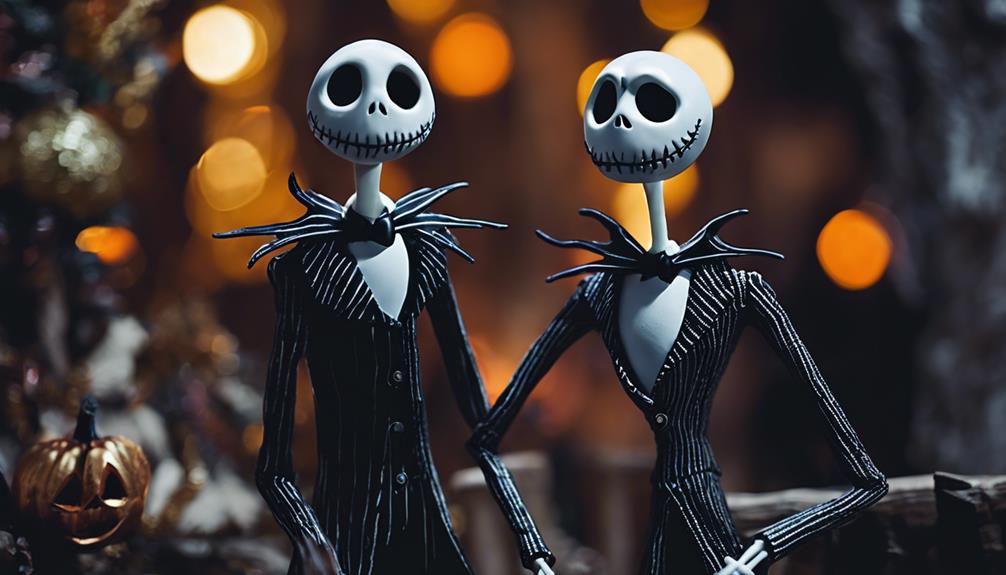
Exploring fan theories and interpretations adds depth to the narrative of 'The Nightmare Before Christmas'.
- Fans theorize about Jack Skellington's true feelings for Sally, debating the intricacies of their relationship dynamics.
- Interpretations suggest deeper meanings behind the characters' actions and motivations, shedding light on their inner struggles and growth.
- Theories probe into the symbolism of Halloween Town and Christmas Town, exploring how they mirror the characters' journeys and transformations.
- Fans analyze the role of Oogie Boogie, unraveling his significance in the story's themes and the challenges he poses to Jack and the other characters.
Cultural Impact and Legacy
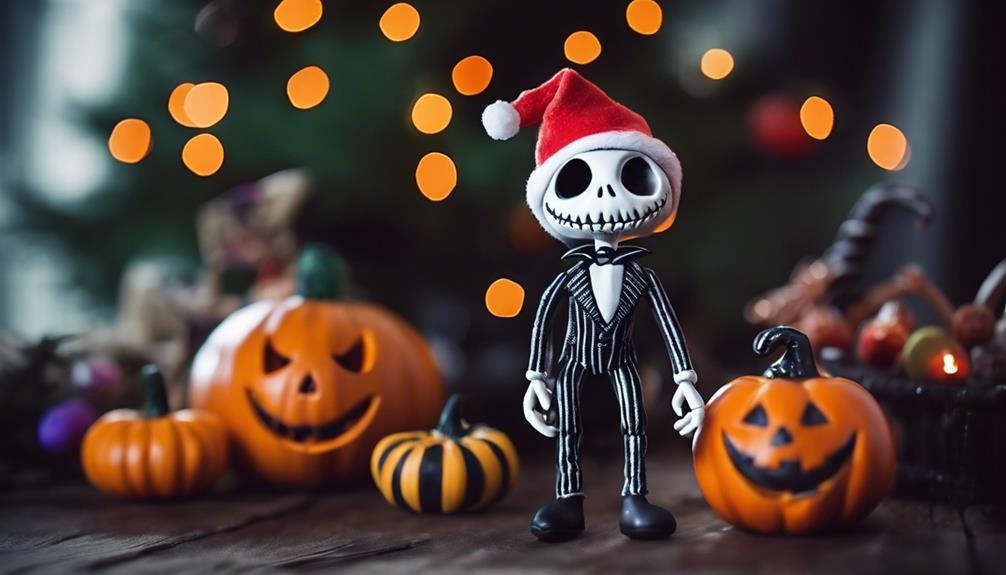
As you reflect on the enduring popularity of 'The Nightmare Before Christmas', its significant cultural impact and lasting legacy come into sharp focus. Tim Burton's creation of Halloween Town and the beloved character Jack Skellington have left an indelible mark on the world of animation. This animated musical has garnered a large cult following, solidifying its place as one of the greatest animated films of all time. The film's acclaim is evident in its selection for preservation in the United States National Film Registry in 2025 and its nomination for an Academy Award for Best Visual Effects.
Audiences and critics alike have praised the film's unique animation style, memorable characters, enchanting songs, and engaging score. Its cultural significance is further underscored by its reissue by Walt Disney Pictures and re-release in Disney Digital 3-D from 2006 to 2010. 'The Nightmare Before Christmas' continues to enchant viewers of all ages, leaving an enduring legacy that transcends generations.
Frequently Asked Questions
How Is the Nightmare Before Christmas a Halloween Movie?
The Nightmare Before Christmas is a Halloween movie due to its setting in Halloween Town, featuring spooky creatures like ghouls and ghosts. The film is filled with Halloween-themed elements such as pumpkins, skeletons, and witches, setting a macabre tone.
Characters like Jack Skellington and Oogie Boogie embody classic Halloween motifs, contributing to the overall spooky atmosphere. It explores themes of darkness, fear, and the supernatural, making it a quintessential Halloween movie experience.
What Is the Meaning of the Nightmare Before Christmas Movie?
The Nightmare Before Christmas movie explores themes of identity crisis and self-discovery, emphasizing the consequences of straying from one's true self. It highlights the beauty of diverse holiday traditions and the importance of embracing individual talents.
Through Jack's journey, the film conveys messages of acceptance and gratitude, ultimately reminding you to cherish what truly matters in life. The movie's profound message lies in finding fulfillment by staying authentic to yourself and appreciating unique qualities.
Who Was Jack Skellington Before He Died?
Before Jack Skellington died, he was the Pumpkin King of Halloween Town. He was a living person with a love for Halloween, known for his charisma and leadership.
His death and transformation into a skeleton are pivotal to his character in the movie. Jack's journey from Halloween to Christmas showcases his character evolution.
What Is the Nightmare Before Christmas Message?
The message of 'The Nightmare Before Christmas' is about appreciating what you have. It emphasizes thankfulness throughout, showing that gratitude is key to success, like in Jack's saving of Christmas.
The film teaches the importance of genuine gratitude, highlighting the value of appreciating the present moment and surroundings. It's a soul-affirming experience that showcases the enduring lesson of being thankful.
Conclusion
As you ponder the true nature of 'The Nightmare Before Christmas,' one thing is clear – this beloved film continues to captivate audiences with its unique blend of Halloween spookiness and Christmas cheer.
From Tim Burton's visionary direction to the iconic characters and intricate animation techniques, this movie has left a lasting impact on pop culture.
So, next time you watch Jack Skellington's journey, remember to appreciate the gratitude and family themes woven throughout this timeless classic. Happy haunting!
